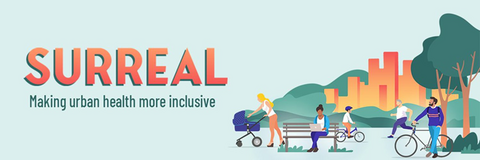Publication of a new article on Frontiers of public health
Introduction: Converging evidence suggests that urban living is associated with an increased likelihood of developing mental health and sleep problems. Although these aspects have been investigated in separate streams of research, stress, autonomic reactivity and circadian misalignment can be hypothesized to play a prominent role in the causal pathways underlining the complex relationship between the urban environment and these two health dimensions. This study aims at quantifying the momentary impact of environmental stressors on increased autonomic reactivity and circadian rhythm, and thereby on mood and anxiety symptoms and sleep quality in the context of everyday urban living.
Method: The present article reports the protocol for a feasibility study that aims at assessing the daily environmental and mobility exposures of 40 participants from the urban area of Jerusalem over 7 days. Every participant will carry a set of wearable sensors while being tracked through space and time with GPS receivers. Skin conductance and heart rate variability will be tracked to monitor participants' stress responses and autonomic reactivity, whereas electroencephalographic signal will be used for sleep quality tracking. Light exposure, actigraphy and skin temperature will be used for ambulatory circadian monitoring. Geographically explicit ecological momentary assessment (GEMA) will be used to assess participants' perception of the environment, mood and anxiety symptoms, sleep quality and vitality. For each outcome variable (sleep quality and mental health), hierarchical mixed models including random effects at the individual level will be used. In a separate analysis, to control for potential unobserved individual-level confounders, a fixed effect at the individual level will be specified for case-crossover analyses (comparing each participant to oneself).
Conclusion: Recent developments in wearable sensing methods, as employed in our study or with even more advanced methods reviewed in the Discussion, make it possible to gather information on the functioning of neuro-endocrine and circadian systems in a real-world context as a way to investigate the complex interactions between environmental exposures, behavior and health. Our work aims to provide evidence on the health effects of urban stressors and circadian disruptors to inspire potential interventions, municipal policies and urban planning schemes aimed at addressing those factors.





